GHANA









YEFL
CSO
CHPS
GYM
NGO
YOUTH EMPOWERMENT FOR LIFE
CIVIL SOCIETY ORGANIZATIONS
COMMUNITY-BASED HEALTH. PLANNING AND SERVICES
NON-GOVERNMENTAL ORGANIZATION
Youth development is critical for young people to realize their capabilities to pursue gainful and decent employment, education opportunities, health and well-being, and civic and political participation. Despite Ghana’s youth development index of 0.608 according to the 2020 Global Youth Development Index, which indicates a medium score compared to other developing countries, there are still variations and inequalities in youth development within the country. This study on youth development priorities in Northern Ghana has shown that the youth in this region face significant challenges such as high unemployment rates, limited opportunities for skills development, and poor healthcare services. The study also reveals the needed development priorities of the youth including the need for the government and all stakeholders to involve young people with diverse backgrounds in all policy and program development stages, implementation, and evaluation, without regard for political affiliation, provide youth with more opportunities to learn about and connect to labor markets, and also provide jobs and access to credit for entrepreneurs
To ensure that these priorities are effectively addressed, it is essential that the government and all stakeholders work together to create an enabling environment for the youth to thrive. Ultimately, investing in youth development is investing in the future of Ghana.
Young people's development and well-being are fundamental to any nation's prosperity and stability. In the context of Northern Ghana, a region known for its unique blend of cultural diversity and agricultural richness, the challenges and opportunities that define the lives of its youth are of paramount significance. This report delves into issues affecting the youth in northern Ghana cutting across the five regions in Northern Ghana, North–East, Savana, Upper East, and Upper West for integration into the national Youth Manifesto.
Youth advocates argue that meaningful participation by young people in governance processes is necessary to develop effective policies and programs that respond to the challenges facing today’s youth. Unfortunately, the youth are often invisible in policy making (United Nations Economic Commission for Africa, 2017), even in the political manifestos that give rise to interventions targeting young people. The identification and expounding of issues affecting young people in their context and characteristics is necessary to develop this year's youth manifesto. This report aims to inform the content and shape of this year's youth manifesto, which will be used to influence the manifestos of political parties In this regard, the youth networks across the five regions in northern Ghana with support from YEFL Ghana were mobilized to share their perspective on various themes of development as well as priority areas for youth development The compilation of these to be primarily fed into the development of the Ghana Youth Manifesto and for the attention of development stakeholders, especially the Northern Development Authority, Regional Coordinating Councils of the 5 regions in northern Ghana and to the Northern Caucus of Parliament of Ghana among others
In Ghana, young people aged 15-35 constitute 38% of the population, while children under age 15 comprise another 35% (Ghana Statistical Service, 2021). Despite Ghana’s youth development index of 0.608 according to the 2020 Global Youth Development Index, which indicates a medium score compared to other developing countries, there are still variations and inequalities in youth development within the country. Arguably, the biggest development problem in Ghana is the disparity between the geographic north and south regions.The geographic North comprising five [5] administrative regions in the Savanah Ecological Zone is significantly underdeveloped and lags behind the south in almost all development metrics. The northern region has consistently been a concern in several inequality reports, including the Ghana Poverty and Inequality Report For instance, regions in northern Ghana has the highest poverty rate, with almost half of the population living below the poverty line (Ghana Statistical Service, 2018). Additionally, these regions have a low literacy rate, with only 34 9% of the population being literate, compared to the national average of 79.5% (Ghana Statistical Service, 2018). Also, the national youth unemployment rate for young adults aged 15-24 years is about 32.8%, and in this age category, the average unemployment rates are much higher in some of the northern regions, with the Upper East region having 39%, the Savannah region 38.2%, and the North East having 34.7 %. This means there is a need to invest more in these regions to improve the livelihoods of the youth and ensure that moving forward, marginalization in multifaceted and multi-sectoral development areas are not experienced by these regions.
This study employed a mixed-method approach to assess the youth development priorities in Northern Ghana. The combination of quantitative and qualitative data collection methods ensured a well- rounded understanding of the challenges faced by the youth Structured questionnaires were administered to a representative sample of 328 youth in Northern Ghana. The sample was selected to ensure diversity in age, gender, location, and membership within youth groups and networks. Surveys gathered information on critical indicators such as employment status, educational attainment, health access, and satisfaction of basic needs. In-depth interviews and focus groups were also conducted with youth leaders and a sample of the youths. These interviews provided qualitative insights into youth experiences, aspirations, challenges, and potential improvement solutions. Structured questionnaires were administered to a representative sample of youth in the Northern Ghana region Surveys gathered information on critical indicators such as employment status, educational attainment, health access, and satisfaction of basic needs. These interviews provided qualitative insights into youth experiences, aspirations, challenges, and potential solutions
It is important to acknowledge the limitations of this study. The study was conducted within a limited time frame, which may have constrained the depth of the analysis. Despite this limitation, this report endeavors to provide key highlights of youth development priorities in Northern Ghana.
Despite the variety of policies and programs aimed at meeting youthful aspirations, ranging from free secondary school and vocational training to entrepreneurship promotion, high levels of unemployment and limited opportunities for skills development still remain a key challenge for Ghana’s youth (Dadzie, Fumey, & Namara, 2020). More than one-fifth of 15- to 35-year-olds are not in education, employment, or actively involved in training (Ghana Statistical Service, 2022) This general finding is no different from the situation in the administrative regions in northern Ghana

Education and Skills Development represents a fundamental pathway towards sustainable growth and empowerment. This section delves into the delicate landscape of education and skills acquisition, shedding light on key findings highlighting the challenges, and opportunities within this critical domain. The youth were asked to rate the quality of education and training they receive in the region as seen in the chart below;
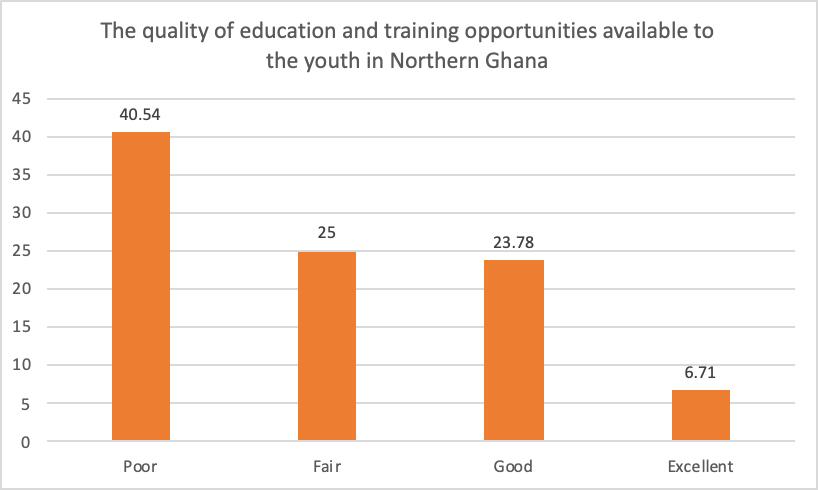
In their response, the quality of education and training opportunities available in Northern Ghana is “poor”, representing a notable 40% indicating a prevalent dissatisfaction with the existing educational infrastructure and educational services. Another significant proportion, 25%, assessed it as "Fair," suggesting substantial room for improvement. The smaller percentage of 6.71% rating it as "Excellent" suggests that there are positive aspects that deserve recognition However, the predominance of "Poor" and "Fair" ratings signals a need for comprehensive efforts to address perceived deficiencies in education and training in northern Ghana. Delving deeper into the reasons behind these ratings to identify specific challenges and opportunities for improvement, participants had this say;
“The quality of education is poor in our region because of the lack of infrastructure, inadequate teachers, lack of textbooks and teaching and learning materials. I went to a school (Girls model) that had only four teachers who were supposed to teach eight subjects However, each teacher has his or her own subject areas This does not give them adequate room to teach all the subjects adequately to cover the syllabus. How then do you except us to do well academically?”
“The quality of education in northern Ghana is a no! no!. You go to schools and find children lying on the floor to write, teachers also not having seats, and there’s no portable water available for the pupils to d r i n k T h e c h i l d r e n t u r n t o g o h o m e a t t h e s l i g h t e s t opportunity to drink water and do not return back to school in most cases. ”
The youth further expressed the barriers to accessing quality education and skills development programs in Northern Ghana. Of the total 328 participants, 194, representing 59%, indicated facing financial barriers in accessing education and skill training, as seen in the chart below.
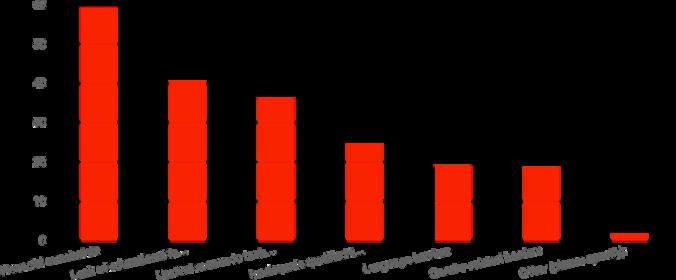
The lack of educational facilities, identified by 133 youths representing 40% underscores critical infrastructure deficits hindering access to quality learning environments A digital divide persists, as 35.98% face limited access to technology, impeding the acquisition of essential digital skills. Inadequate qualified teachers or trainers (24.39%) and sociocultural challenges such as language barriers (18 9%) and gender- related barriers (18 6%) further contribute to the complexity of these obstacles.
This comprehensive analysis calls for holistic interventions, encompassing financial support, infrastructure development, digital inclusivity, teacher training, and cultural sensitivity, to address the multifaceted challenges and pave the way for enhanced educational and skill development opportunities for the youth in Northern Ghana
Learning gaps vary considerably by region. The Greater Accra region has the highest shares of children with foundational reading and numeracy skills, whereas the Northern region has the lowest shares of children with these skills. Fact sheet
Across all levels of education, the Northern region has the highest out-of- school rates
At the primary level, the out-of-school rate in the Northern region is 20%, while with the exception of the Upper West region at 11%, all the other regions have a rate of 7 % or lower
Recommendations
Government and stakeholders should revise education and training curricula to develop knowledge, skills, and competencies that match labor demands.
Support youth entrepreneurial development through academic sector and private industry collaborations and specialized industry events and competitions, providing microfinance loans to impoverished graduates to ensure equity among postgraduates
Address inequalities in access to education for girls and youth with disabilities, particularly in impoverished and rural areas.
Increased funding should be focused on impoverished communities, targeted at minimizing external fees, including for books, uniforms, computers, and transportation, for impoverished students.
This session discusses the opportunities available for young people to gain the necessary skills, knowledge, and experience to succeed in the job market. It encompasses a range of initiatives, including job training, entrepreneurship support, and career guidance. The goal is to equip young people with the tools they need to secure employment or start their own businesses, thereby contributing to their communities' economic growth and development.Based on surveys and insightful interviews, issues on factors influencing the prospects of young individuals seeking sustainable employment and economic advancement were discussed

The majority of respondents, 62% indicated the scarcity of jobs. This highlights the imbalance between the number of job seekers and available employment options According to the participants, unemployment leads the youth into various social vices. Participants stated the following;
“Unemployment is destroying the values that Northen Region once held; which is that, people do not steal or there are no robberies. But because people do not have jobs and still have to eat, armed robbery and petty theft is on the rise in Northern Ghana. ”
“The few employment opportunities available have also been politicized, so if you are not a known member of a governing political party you don’t stand a chance of gaining employment. ”
“The lack of jobs and economic opportunities encourages most of us to travel to Accra and Kumasi in search of jobs ”
Also the youth in Northern Ghana were asked what the major challenge is when setting up a business or seeking employment
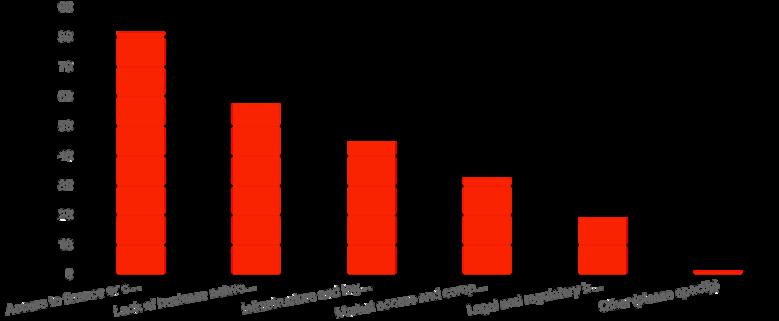
The overwhelmingly high percentage of respondents citing access to finance or capital as a primary challenge underscores the critical role of financial constraints in hindering entrepreneurial endeavors and job-seeking initiatives. This signifies the pressing need for improved financial infrastructure, including accessible loans, grants, and financial literacy programs tailored for the youth. The lack of capital is a major barrier to initiating or expanding businesses, indicating the necessity for targeted interventions in this domain. Lack of Business Networks and Mentorship rated(57.32%) The prominence of this challenge highlights the value placed on networks and mentorship in fostering entrepreneurial growth. The relatively high percentage indicates a recognized need for guidance, support, and access to networks that can facilitate knowledge exchange and skill development Infrastructure and Logistical Challenges (44.51%). The acknowledgment of infrastructure and logistical challenges as a barrier reflects the practical impediments faced by young entrepreneurs or job seekers. Inadequate infrastructure, such as transportation, unstable power supplies, or technology access, poses hurdles in conducting business effectively. Market Access and Competition (32.32%) While slightly lower in percentage, the recognition of market access and competition as a challenge indicates the struggle young entrepreneurs face in penetrating markets and competing effectively. Legal and Regulatory Barriers (18.9%)Though a smaller percentage, the acknowledgment of legal and regulatory barriers suggests that navigating bureaucratic processes and compliance requirements presents obstacles for young entrepreneurs Streamlining regulatory procedures and providing clarity on legal frameworks could ease the burden faced by aspiring entrepreneurs.
As part of recommendations towards addressing unemployment issues in Northern Ghana, a participant indicated;
“The factories are all down south of Ghana and efforts should be made to locate some of these factories up north because they have the employment potential for the youth in the northern region too. These factories can take advantage of vast agricultural raw materials available such as tomatoes, shea nuts, beef, cashew etc”
Developing accessible loan programs tailored for young entrepreneurs.
Establishing grants or funding initiatives specifically designed for youth-led initiatives. Implementing comprehensive financial literacy programs to enhance financial management skills
Implement targeted financial infrastructure improvements, including:
Creation of business networks and mentorship for the youth:
Facilitate the creation of robust business networks and mentorship programs:Establishing grants or funding initiatives specifically designed for youth-led initiatives.
Establish mentorship initiatives connecting experienced professionals with young entrepreneurs. Implement targeted financial infrastructure improvements, including:
Create networking events, workshops, and forums to foster knowledge exchange and skill development
Legal and Regulatory Barriers:
Provide educational resources and workshops to increase awareness of legal frameworks.
Advocate for policies that foster a more supportive regulatory environments for youthled startups
Youth participation and engagement in decision-making processes are crucial elements for sustainable development and inclusive governance. This session focuses on the current state of youth involvement in decisionmaking in Northern Ghana, exploring key initiatives, challenges, and potential opportunities for enhancing their role in shaping the region's future
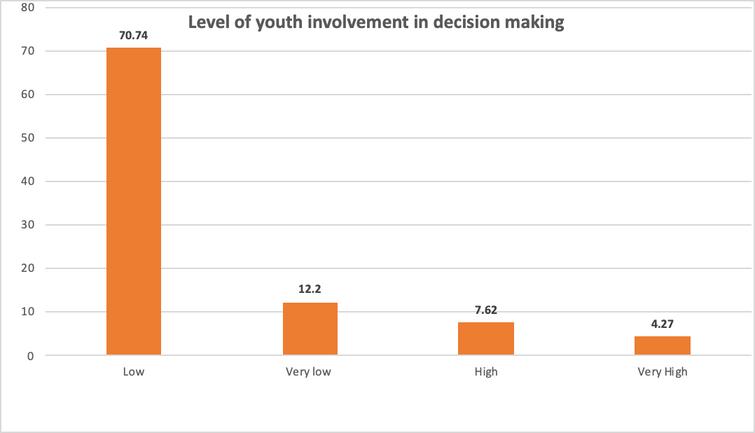
In our assessments of the youth inclusion in decision-making processes in Northern Ghana, a comprehensive dataset has emerged, shedding light on the perceived levels of engagement among the youth The data, collected from a diverse sample, reveals varying sentiments, with 70.74% expressing that youth inclusion is perceived as "very low," 12.24% indicating "low," 7.62% reporting "high," and 4.27% asserting "very high." This data prompts a closer examination of the factors contributing to these perceptions and the implications for the region's governance and development
The main barriers that prevent more young people from actively participating in community development and decision-making
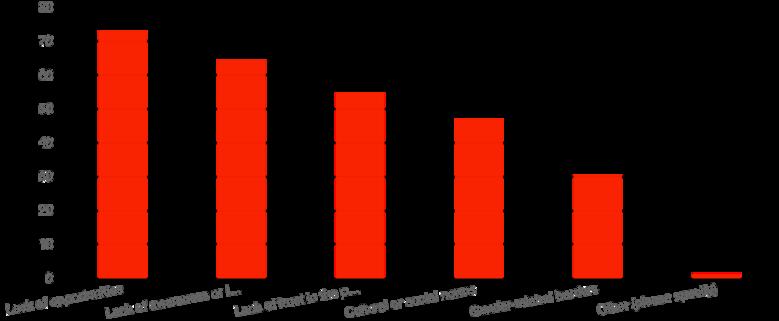
The overwhelming consensus among respondents, with 72.87%, points to the widespread issue of a lack of opportunity as a primary obstacle to youth participation in decisionmaking.
This suggests that many young individuals perceive a scarcity of avenues where they can actively engage in decision-making processes. This originates from limited access to leadership roles, educational opportunities, and platforms that empower the youth to contribute meaningfully towards development
Lack of Awareness or Information (64.33%):
A significant 64.33% identifying a lack of awareness or information underscores a critical challenge in the communication landscape.
This indicates that many young people may not be sufficiently informed about how the decision-making processes work or how they can be involved
Lack of Trust in the Political System (55.57%):
The data reveals a lack of trust in the political system among 55 57% of respondents This highlights a profound issue affecting youth engagement with their political leaders
The Youth discern a disconnect between their concerns and the responsiveness of political structures.
Cultural or Social Norms (46.95%):
Nearly half of the respondents, at 46.95%, attribute low youth participation in decision making to cultural or social norms.
The acknowledgment of cultural or social norms as a barrier to youth participation emphasizes the impact of traditional values on the role of young individuals in decisionmaking. Cultural shifts are required to challenge norms that may limit the scope of youth involvement
The awareness of gender-related barriers, as indicated by 30.49% of respondents, underscores the recognition that challenges faced by young people are not uniform but intersect with gender dynamics. This speaks to the understanding that the obstacles hindering youth participation in decision-making are influenced by societal norms, expectations, and biases associated with gender. In many contexts, traditional gender roles and stereotypes may limit the opportunities available to young individuals, with differing expectations and barriers based on gender identity.
Develop and implement programs that provide tangible opportunities for young individuals to actively participate in decision-making at various levels This includes establishing youth councils, mentorship programs, and leadership training initiatives.
Launch targeted campaigns to enhance awareness and understanding of decisionmaking processes among the youth. Use accessible communication channels, including social media and community outreach, to disseminate information about governance structures and opportunities for involvement
Establish platforms for constructive dialogue between generations, fostering mutual understanding and cooperation. This can bridge the gap between traditional values and the evolving needs and the perspectives of the youth.
Develop mentorship programs that connect experienced leaders with young individuals, providing guidance, support, and a platform for knowledge transfer This can contribute to the professional development and empowerment of the youth
Address gender-related barriers by promoting gender equality in decision-making processes. Implement policies that ensure equal representation and opportunities for all genders, and actively challenge stereotypes that may limit the participation of certain groups.
Health and well-being are key factors in determining positive youth development, as they significantly influence poverty, educational attainment, socio-economic growth, and psychological well-being. Successive health service medium-term national development plans address Ghana's national health priorities. With regard to youth, these priorities include achieving universal health coverage, improving access to and quality of health services, and reducing morbidity and mortality from communicable and noncommunicable diseases yet challenges addressing health inequalities persist. These relate to unequal distribution of health care funding, limited number of skilled medical service providers, and shortages of medical supplies and facilities In this session, Northern youths were asked questions pertaining to their experiences and opinions This section reviews the status of key determinants in youth health.
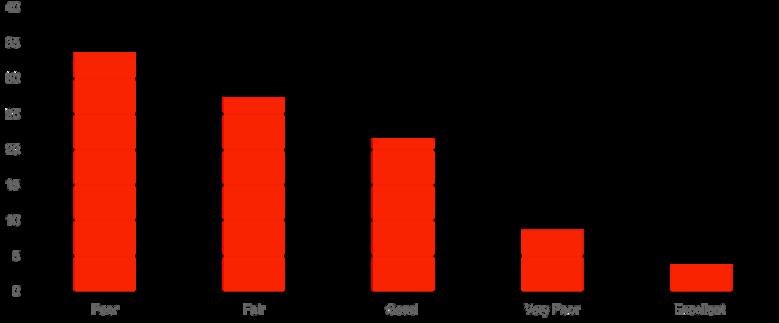
A considerable percentage of respondents rated the overall quality of healthcare services as either "Poor" or "Very Poor." This indicates a significant portion of dissatisfaction or concerns regarding the healthcare services provided to young people. In their words, health care in the north;
“Access to healthcare is a big challenge because we do not have healthcare facilities or CHPS compounds in some of our communities. The few available facilities also have poor or no medical resources to properly attend to patients.” In other’s remarks, to access better healthcare services,
“People have to travel miles on bad roads to bigger facilities in surrounding towns which sometimes lead to the loss of life of patients and pregnant women. ”
The most pressing health issues affecting young people in Northern Ghana

A number of interrelated health issues affects the well-being of communities in Northern Ghana The ongoing war against malaria is at the forefront, where the prevalence of this mosquito-borne disease remains high, disproportionately affecting disadvantaged communities. Aside from infectious illnesses, drug misuse is a major public health issue, with socioeconomic factors contributing to its persistence. Furthermore, the region is dealing with a worrying fall in maternal health rates, which is made worse by inadequate access to excellent healthcare services throughout pregnancy and childbirth Malnutrition remains a widespread problem that affects both children and adults, compounding health inequities The impact on mental health is evident with the psychosocial consequences of chronic health concerns wreaking havoc on individuals and communities. Addressing these complicated challenges demands a comprehensive approach that incorporates mental health, sexual and reproductive health, and nutritional interventions, fostering a resilient and healthier Northern Ghana.
Adequate knowledge and access to health services and information
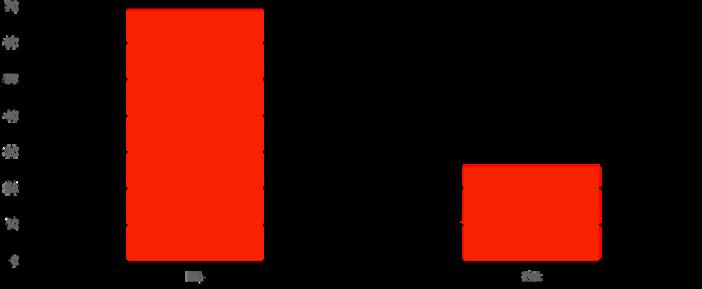
A substantial percentage of respondents, 68 8% who participated in the study showed a lack of trust in the region's youthful population's knowledge and access to health care This shows possible issues with healthcare infrastructure and youth-oriented educational initiatives. The perceived lack of health-related resources highlights limitations such as restricted access to healthcare facilities, inadequate health education, and possibly cultural influences influencing information diffusion. Addressing this issue is critical for improving the well-being of Northern Ghana's young, necessitating joint efforts by government agencies,NGOs, and community leaders to devise targeted interventions The data emphasizes the need of rigorous assessments and community participation in identifying particular areas for development. By empowering young people with accurate health information and ensuring accessible healthcare services, Northern Ghana can progress towards a healthier and more informed generation.
Malaria:
Enhance Prevention Efforts: Strengthen malaria prevention strategies, including widespread distribution of insecticide-treated bed nets, indoor residual spraying, and community-based health education.
Access to Treatment: Improve accessibility to prompt and effective antimalarial treatments, ensuring that healthcare facilities are well-equipped to diagnose and treat cases promptly.
Substance Abuse:
Community Education Programs: Implement community-based educational initiatives to raise awareness about the risks and consequences of substance abuse, promoting informed decisionmaking.
Treatment and Rehabilitation: Establish accessible treatment and rehabilitation centers, providing comprehensive support for individuals struggling with substance abuse.
Low Maternal Rates:
Improve Access to Maternal Healthcare: Enhance access to quality maternal healthcare services, particularly in remote areas, by investing in healthcare infrastructure and deploying mobile clinics.
Community Health Workers: Train and deploy community health workers to provide essential maternal health education, antenatal care, and postnatal support.
Malnutrition:
Nutritional Education: Implement nutritional education programs at the community level, emphasizing the importance of balanced diets, exclusive breastfeeding, and micronutrient supplementation.
Food Security Initiatives: Support community-driven agricultural initiatives to enhance food security, ensuring a diverse and nutritious diet for families
Mental Health:
Integrated Mental Health Services: Integrate mental health services into primary healthcare systems, providing accessible and culturally sensitive mental health support.
Community Support Networks: Foster community support networks to reduce stigma, raise awareness, and provide psychosocial support for individuals facing mental health challenges
Sexual
Comprehensive Sex Education: Implement comprehensive sexual education programs in schools and communities, addressing reproductive health, family planning, and prevention of sexually transmitted infections.
Accessible Family Planning Services: Ensure access to affordable and quality family planning services, empowering individuals to make informed choices about their reproductive health
Education, and skills development
Improve school infrastructure and availability accross communities
Government and stakeholders should provide vocational and technical training to the youth especially for skills in demand like ICT
Schlarship opportunites should be made available by all stakeholders to youths in Northen Ghana towards skill training and education
Business Support: Develop business and start-up incubators that can guide earlystage businesses through to existing larger ones.
Improve access to credit for entrepreneurs for them to be able to expand their businesses
Employment and economic opportunities
Government and other stakeholders should allocate resources to support youth agricultural initiatives in the region
As an employment and development plan, the government should establish context fit factories in all regions in the savannah ecological zone whose inputs will primarily be sourced from these regions”
Youth Participation and Engagement
Integrating youth perspectives into policy development and governance structures by encouraging advocacy efforts that amplify the voices of young people and influence policies that directly impact them through youth networks and organizations.
Implementing educational programs to raise awareness among young individuals about their rights, civic duties, and the significance of active participation in community and national issues
Implementation of a quota system on a number of youth required in discussing regional and district level issues
Improve youth health communication strategies on mental health and substance abuse
Health and wellbeing
Government should provide adequate health supplies towards addressing youth health issues.
Dadzie, E. S., Fumey, G., & Namara, R. E. (2020)
Ghana Statistical Service. (2021)Ghana living standards survey
https://www.unicef.org/ghana/media/4666/file/2022%20Youth%20-%20%20Brief.pdf
http://www nya gov gh/programmes/governance-youth-empowerment
http://www.nya.gov.gh/programmes/youth-ict